Specimens with an open root system, which are sold with "bare" roots wrapped in cloth or film, are planted in April — May. Juniper will have time to settle down well in a new place before the onset of winter cold. It is permissible to move the plant to your garden and from the end of August to the end of September, if you did not have time to do it in the spring.
Juniper with a closed root system is in a pot or container. Such a specimen can be moved into the ground throughout the season — from April to October. However, in summer it is worth choosing a relatively cool and cloudy day. By the way, it is seedlings with a closed root system that can most often be found in shops, garden centers and nurseries.
Plants with "bare" roots take root worse and often die soon after transplantation. The fact is that sellers often dig juniper directly from the ground, severely damaging the bush, and in this state it can wait a long time for a buyer. Therefore, give preference to seedlings in containers: the root system is in an earthen coma, is not subject to injury and does not stop developing. Such an instance quickly adapts to a new place.
Juniper is one of the most unpretentious species that can withstand both northern frosts and southern drought. It can be planted both in the sun and in partial shade. A small bush can turn into a cone-shaped tree up to 4 m in height. However, it will take a lot of time: the plant annually adds no more than 5 cm in growth.
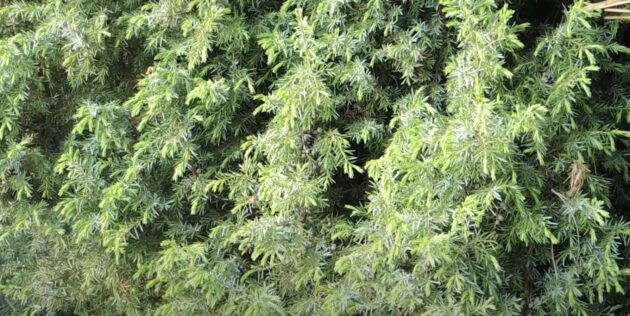
Medium juniper is also resistant to adverse weather conditions. It reaches 3 m in height and about 5 m in diameter. The plant is suitable for decorating slopes, creating a low dense hedge and will look good alone. It can be grown in the sun and in light partial shade.

Juniper horizontal refers to groundcover species. It grows no higher than half a meter and gradually spreads out, capturing the territory with lush branches. Often this shrub is decorated with flower beds along the paths. He feels best in sunny areas.
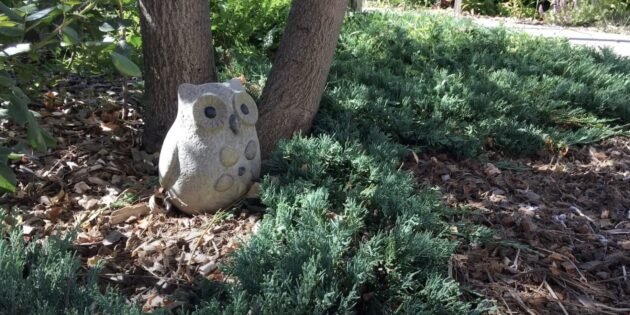
Scaly juniper is characterized by dense, stiff and long needles, which seem to sag at the ends. It forms creeping squat bushes that do not grow above 1.5 meters. This species can be cut, giving the plantings the desired shape. After this procedure, the juniper needles will become even thicker. For cultivation, try to find a sunny or slightly shaded place.
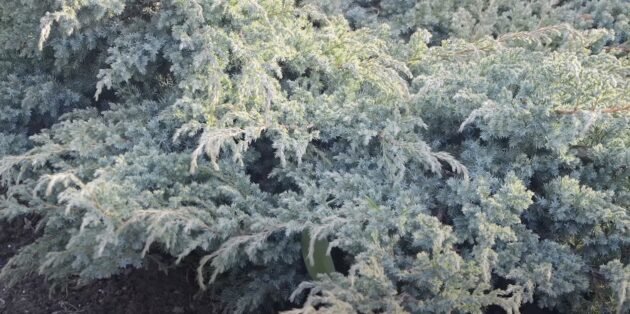
Take a closer look at the conifers: in a healthy bush, it is evenly colored green without red or yellowish spots. The ends of the needles should not be dry. Run your hand over the crown and make sure that the juniper does not crumble. Also inspect the trunk: the bark should be smooth, without cracks and spots.
If you plan to plant several bushes, place them at a distance of 1.5–2 m.
These plants feel best in well—lit areas - their needles will be brighter and more lush in the sun. But light shading is also allowed, especially for low-growing creeping species like scaly and horizontal.
Junipers like light and loose soil. It is optimal if the soil is neutral or slightly acidic within pH 5-7. But if the land on your site does not have the necessary characteristics for growing conifers, this can be corrected by proper preparation of the planting pit.
Dig a hole, the diameter and depth of which will be 1.5–2 times the volume of the container with juniper or its root system.

At the bottom of the landing pit, fill the drainage with a layer of 15 cm. To do this, you can use fine gravel, broken bricks or expanded clay.

It will be needed to move the juniper into the prepared hole. Take 2 parts of soil with an acidity level of 5-7, 1 part of compost and 1 part of river sand. Mix the ingredients thoroughly. Pour about 10-15 cm of this mixture on the bottom of the planting hole. Add 80-100 g of dolomite flour on top and mix.

Carefully remove the juniper from the container, trying not to damage the roots. Put the bush in the planting pit and make sure that the root neck (the junction of the trunk with the roots) is at the same level with the ground surface on the flower bed. If necessary, add the soil to the bottom of the pit or, conversely, remove the excess.
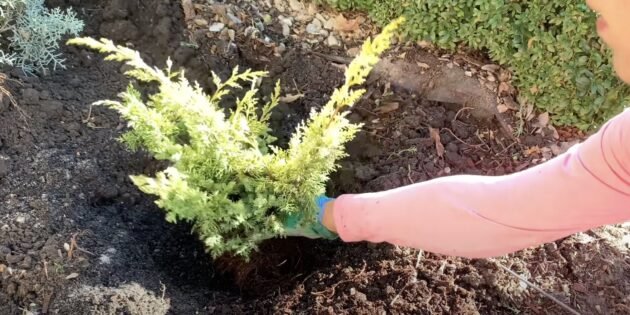
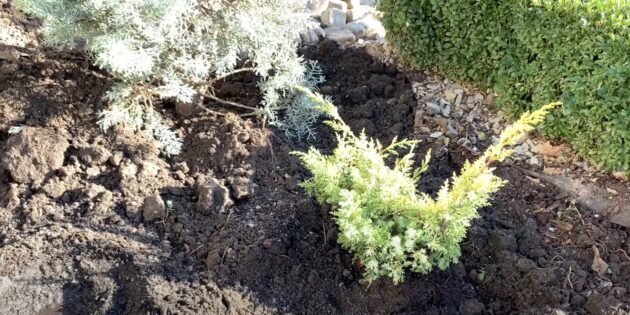
Then stomp around the plant to better tamp down the ground.
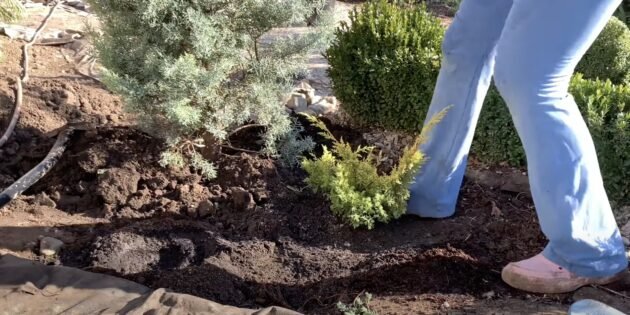
Moisten the soil abundantly. Under the root of one juniper you need to pour 5-10 liters of water.
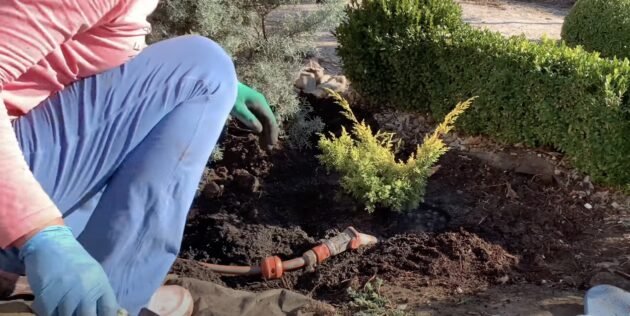
Mulch the barrel circle with dry peat, sawdust or straw. A layer of 5 cm is enough.

This coniferous plant needs to be fed at the beginning of the season and occasionally watered. They are able to withstand severe frosts, so you don't have to worry about hiding bushes for the winter.
Juniper needs watering only during heat and drought. During such periods, pour 10-20 liters of water daily under one bush, depending on its size.
At the same time, from the end of spring until the beginning of autumn, you can spray the crown with water from a hose with a diffuser nozzle. This helps to nourish the needles with moisture and wash away dust and dirt. The procedure is carried out once a week after sunset, so that water droplets under the influence of sunlight do not burn the plant.
For the first time, this is done the next season after planting.
Fertilizers are applied once a year. In the spring, when the snow comes down and the soil thaws, scatter 30-40 g of nitroammophoski on the soil surface in the trunk circle. Then loosen the soil with a chopper, sealing the granules about 5 cm deep.
The composition of nitroammofoski contains an equal amount of nitrogen, phosphorus and potassium — 16 : 16 : 16. Instead, you can use any other means with the same formula.